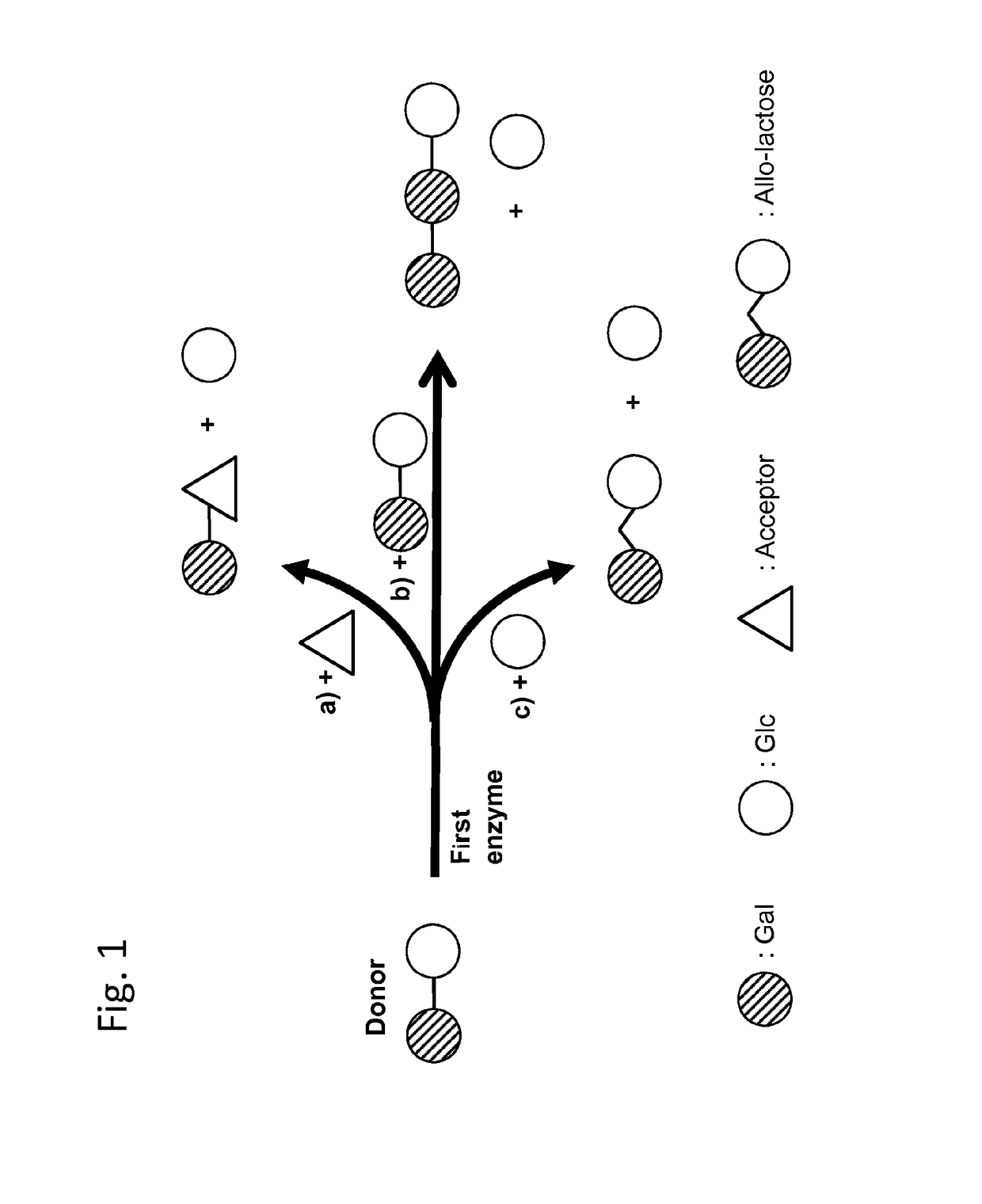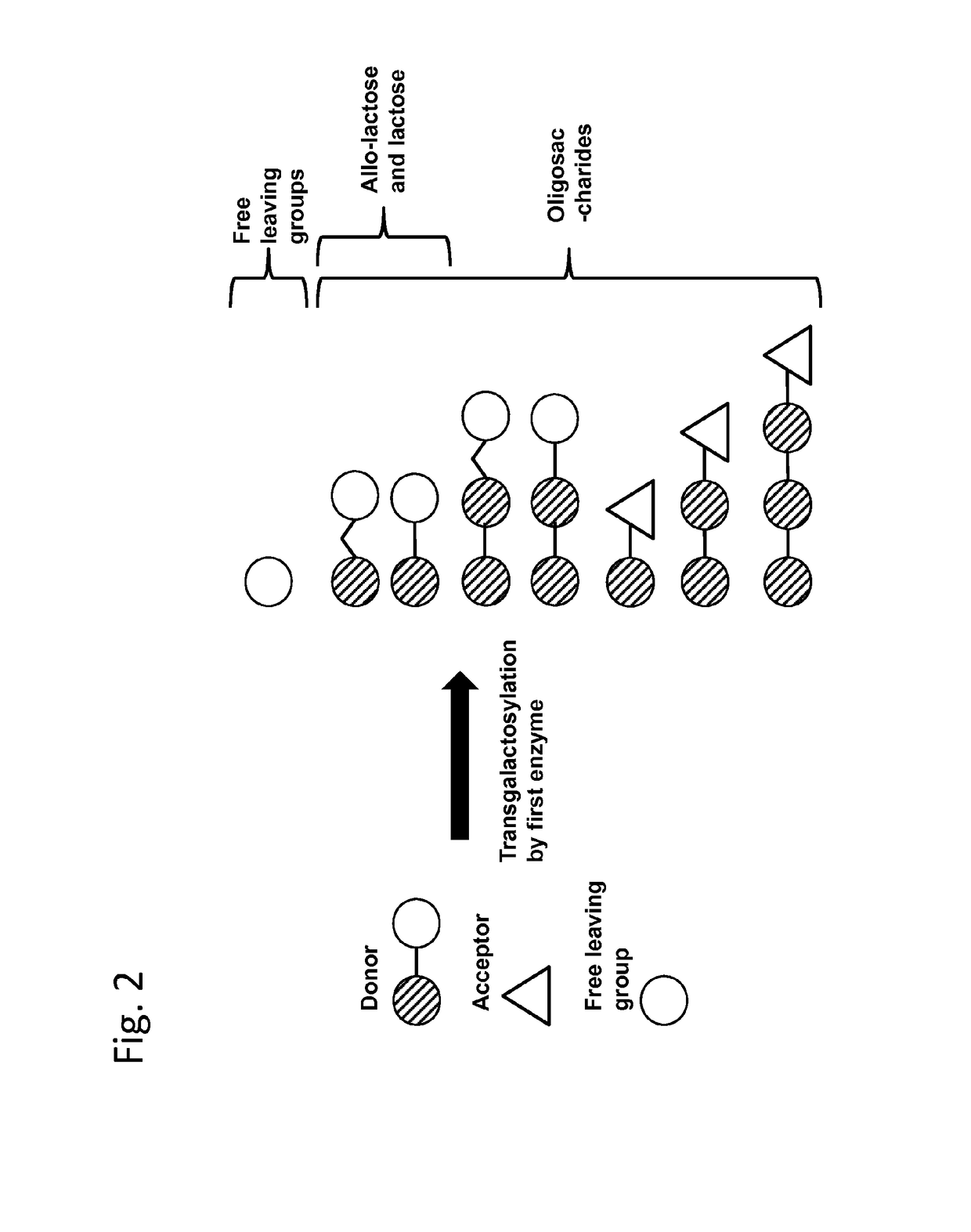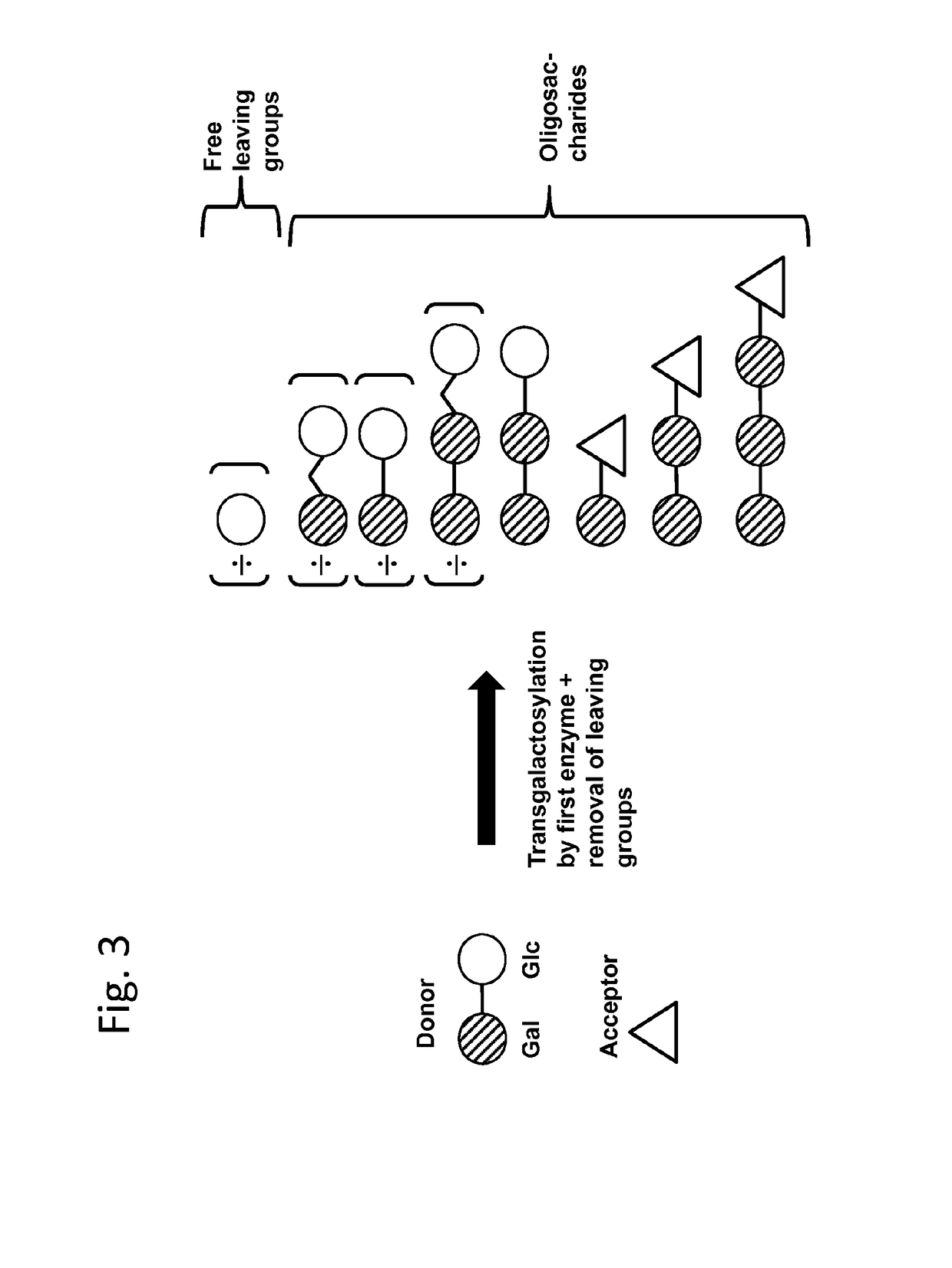Method of producing a composition containing galacto-oligosacchardies
a technology of galactosyl oligosaccharide and composition, which is applied in the field of galactosyl oligosaccharide-containing composition, can solve the problems of reducing the yield of the above-mentioned galactosyl oligosaccharide, and affecting the reaction rate of the reaction rate of the reaction rate, so as to achieve the effect of reducing the yield of the above-mentioned galactosyl
- Summary
- Abstract
- Description
- Claims
- Application Information
AI Technical Summary
Benefits of technology
Problems solved by technology
Method used
Image
Examples
example 1
Preparation of a Beta-Galactosidase Having Transgalactosylating Activity
[0318]A working volume of 750 mL fermentation medium was inoculated with a 2 mL starter-culture of Lysogeny broth (LB) medium with 100 mg / L ampicillin with an OD600 of 3.0 grown for 12 hours. The fermentation was performed in EC medium containing 2% (w / v) yeast extract, 2% (w / v) soy peptone, 1% (w / v) glucose and 100 mg / L ampicillin. The E. coli strain expressing OLGA347 β-galactosidase (having the sequence Val (33)-Ile (1174) of SEQ ID NO 2) was prepared as described earlier (Jørgensen et al., U.S. Pat. No. 6,555,348 B2, Examples 1 and 2). The fermentor was from Applikon with glass dished bottom vessels with a total volume of 2 L and equipped with two Rushton impellers. During the fermentation, pH was maintained at pH 6.5 by appropriate addition of 2 M NaOH and 2 M H3PO4 and temperature was controlled at 37 degrees C. Oxygen was supplied by bubbling with air at a rate of 1-2 L / min, and pO2 was maintained at 30% ...
example 2
Preparation of a Second Beta-Galactosidase Having Transgalactosylating Activity
[0321]A second beta-galactosidase (OLGA917) was prepared along the lines described in Example 1 but based on the expression of the amino acid sequence Val (33)—Glu (917) of SEQ ID NO. 2.
example 3
Determination of the T-Value of a Beta-Galactosidase Enzyme
[0322]The T-value of a beta-galactosidase enzyme is determined according to the assay and formula given below.
[0323]Assay:
[0324]Prepare 3.3 mL enzyme solution consisting of the beta-galactosidase enzyme to be tested, 10 mM sodium citrate, 1 mM magnesium citrate, 1 mM calcium-citrate, Milli-Q water (Millipore, USA), and having a pH of 6.5. The enzyme solution should contain the beta-galactosidase enzyme in an amount sufficient to use 33% (w / w) of the added lactose in 1 hour under the present assay condition. The temperature of the enzyme solution should be 37 degrees C.
[0325]At time=T0 82.5 mg lactose monohydrate (for biochemistry, Merck Germany) is added to and mixed with the enzyme solution, and the mixture is subsequently incubated at 37 degrees C. for 4 hours. Precisely 1 hour after T0 a 100 μL sample is collected and is diluted 1:5 with Milli-Q water and inactivated by heating to 85° C. for 10 min. The inactivated mixtur...
PUM
| Property | Measurement | Unit |
|---|---|---|
| molar weight | aaaaa | aaaaa |
| molar ratio | aaaaa | aaaaa |
| concentration | aaaaa | aaaaa |
Abstract
Description
Claims
Application Information
 Login to View More
Login to View More - R&D
- Intellectual Property
- Life Sciences
- Materials
- Tech Scout
- Unparalleled Data Quality
- Higher Quality Content
- 60% Fewer Hallucinations
Browse by: Latest US Patents, China's latest patents, Technical Efficacy Thesaurus, Application Domain, Technology Topic, Popular Technical Reports.
© 2025 PatSnap. All rights reserved.Legal|Privacy policy|Modern Slavery Act Transparency Statement|Sitemap|About US| Contact US: help@patsnap.com



